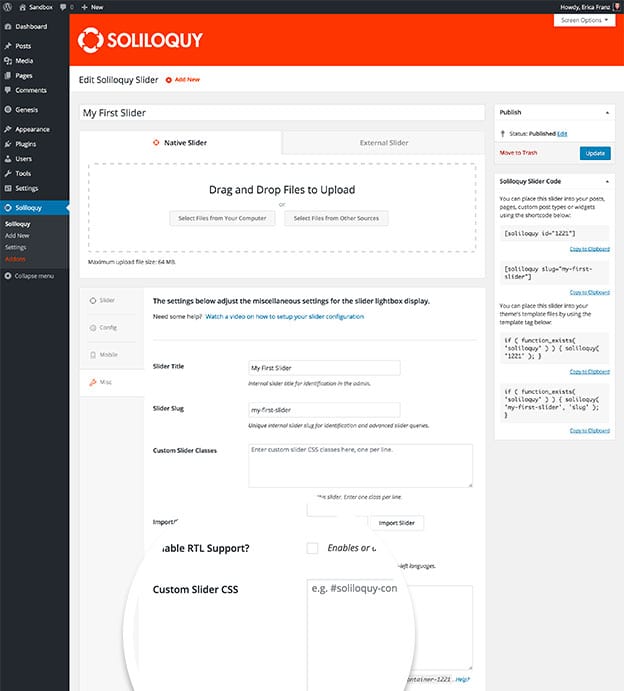
This slider creates a simple thumbnail gallery module to hold content and also functions as a means of navigation. The thumbnail image should be smaller than the original, but the exact size is up to you. next"),īy using the above code, your website can have a streamlined way to show off multiple elements while giving that information at a pace that's user (UX) friendly. This slider consists of a compressed preview image of the original that is used as a placeholder. NextArrow: $(".testimonial-carousel-controls.

PrevArrow: $(".testimonial-carousel-controls. Using Slick Slider's built in responsive breakpoints, we can indicate how many boxes to show on certain devices: Lastly, we must initiate the slider itself by targeting the parent class. With a slight border radius and margins on either side of the box, we can create a standard style that will render nicely on all devices. The boxes that make up each individual slide are controlled strictly with some basic CSS. I have been working with Solodev for nearly 4 years and I couldn't be happier with the results!

With that in place, each individual box/slide can be created with the basic markup: In this example, we use the parent class of "testimonial-carousel". To create your slider box section, first create the parent class to house all of the individual slides. With this tutorial, give yourself an added element of fun and functionality to your website design.īelow is the HTML, CSS, and JavaScript required: HTML Using Slick Slider, you can create a sliding carousel that show cases your content in a user friendly way. They’re one of the easiest ways to showcase anything about your organization – from a client roster, customer testimonials, reviews, and images. Not only does it catch a visitor’s attention, it also improves UX by giving users the ability to access that content at their own pace by triggering the next slide. They give website managers the ability to showcase more content on a cool rotating visual element. For more options, you can visit MDN Web Docs.Slider boxes have become incredibly popular over recent years. Larger scrolls amounts will snap you to the next slide. This will make sure the child element locks back in place if you scrolled just a tiny bit. The second is the one we’ll stick to for this example, which is mandatory. This property accepts two arguments - the first is either x or y - which is either the x-axis or the y-axis. Now here’s the key player: the scroll-snap-type. Also, without it, the snap functionality won’t work. child elements within the set boundaries of the.

The overflow property is used to hide spillovers the contain the. Most of the CSS you see here are basic styling except that we’ve used display: flex because we’re going to be using the CSS property flex-grow in the.

We’ve also set a max-width so that we don’t have too many words on a single line, therefore maintaining readability.
#Simple css slider for text full
All we have here is a full viewport height of 100vh, reset the default browser margins, and set a background color because… why not?įor the paragraph, we’ve added a bit of left padding and a border to make it a little fancy. CSSīorder-left: 2px solid rgba(255, 255, 255, 0.25) įor the body, you can see we’ve done nothing fancy. caption div element which contains a header and paragraph. Inside this child element, we’ve set an image. child div element is, you guessed it - the child. A small river named Duden flows by their place and supplies it with the necessary regelialia. Separated they live in Bookmarksgrove right at the coast of the Semantics, a large language ocean. Far far away, behind the word mountains, far from the countries Vokalia and Consonantia, there live the blind texts.


 0 kommentar(er)
0 kommentar(er)
